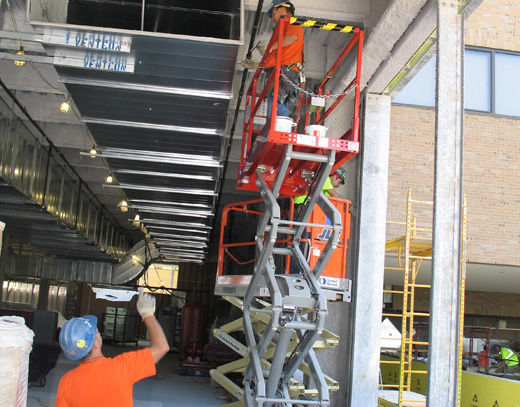
WASHINGTON (PAI) – In a decision that kicks another employer anti-union dodge in the head, the National Labor Relations Board voted 2-1 on July 12 to let unions organize temporary workers at a job site who are doing the same jobs as permanent workers there, without getting the employers’ approval in advance. That applies to part-timers, too.
In a case involving the Sheet Metal Workers organizing drive among temps at Miller & Andersen, also known as Tradesmen International, in Monessen, Pa., the board’s majority said it was returning to the plain language of the National Labor Relations Act and to more than 40 years of NLRB precedents – precedents overturned by a GOP-majority board in 2004.
The decision is important because many employers, in order to dodge labor law and organizing drives, hire workers as temps to toil side by side with full-time permanent workers who perform exactly the same tasks. The old decision, Oakwood, said unions could organize the temps only if they got an OK from both the regular employer and the temp agency.
Needless to say, such a dual approval from employers rarely, if ever, happens.
The new ruling’s important point is whether the temps and the permanent workers share “a community of interest,” which is labor law’s general standard for deciding whether a specific group of workers can vote to unionize or not. If they don’t share such interests, they can’t ordinarily be combined. If they do, all can vote for or against the union.
Since the temps and the permanent workers share such interests, they all can vote for the union, the board majority said.
“Employer consent is not necessary for units that combine jointly employed and solely employed employees of a single user employer. Instead, we will apply the traditional community of interest factors to decide if such units are appropriate.
“A review of board precedent demonstrates that units combining employees solely employed by a user employer and employees jointly employed by that same user employer and a supplier employer” – the temp agency – “are not novel,” the board majority added. Indeed, the board and the law approved such mixed units until 2004, using the community of interest standard.
Quoting from the last prior NLRB ruling on the issue before the 2004 reversal – a case that arose in 2000 – the board said this time that “The scope of a bargaining unit is delineated by the work being performed for a particular employer.
“In a unit combining the user employer’s solely employed employees with those jointly employed by it and a supplier employer, all of the work is being performed for the user employer. Further, all of the employees in the unit are employed, either solely or jointly, by the user employer. Thus, it follows that a unit of employees performing work for one user employer is an “employer unit” for purposes of” labor law and for organizing.
Photo: Photo: Sheet Metal Workers are part of the building and construction trades. In shops they layout, fabricate, and assemble sheet metal products. In the field they install these sheet metal products in buildings. | Sheet Metal Workers Local 80.










